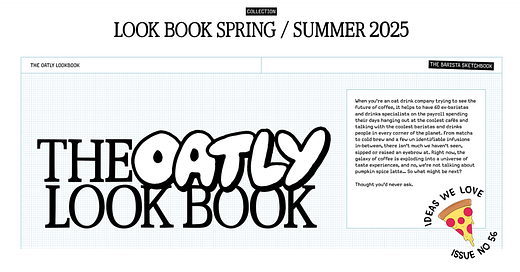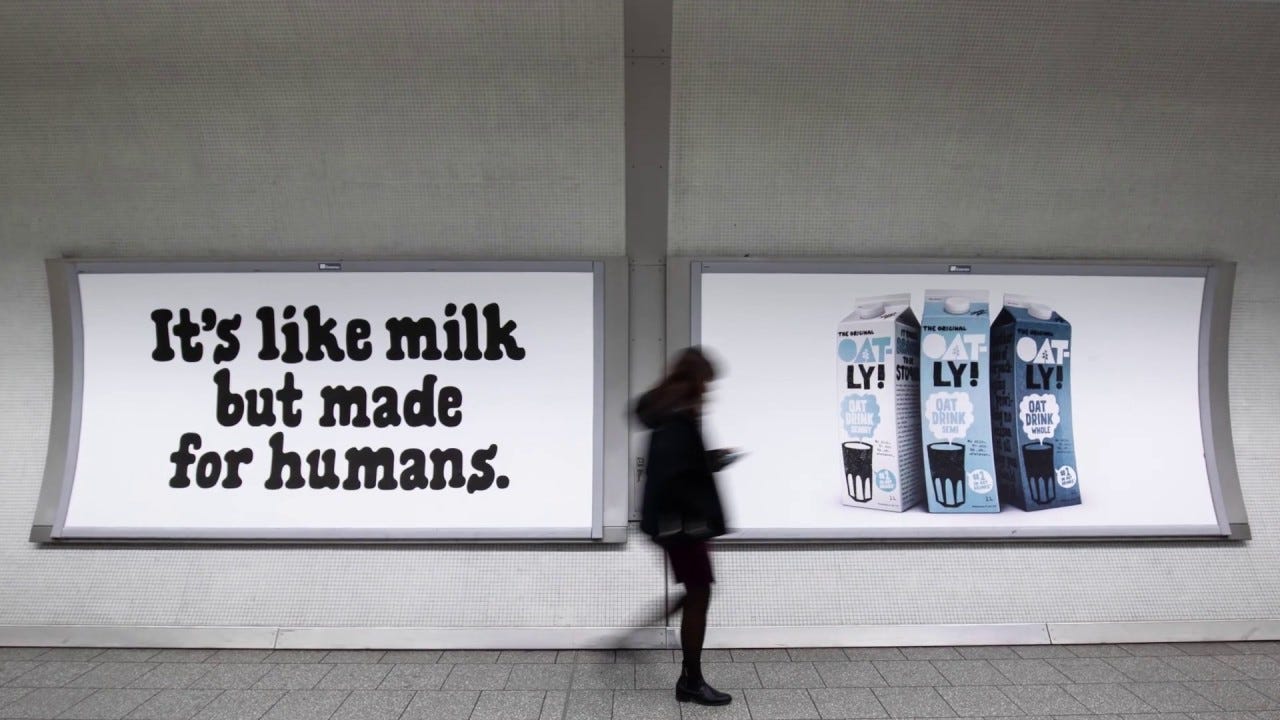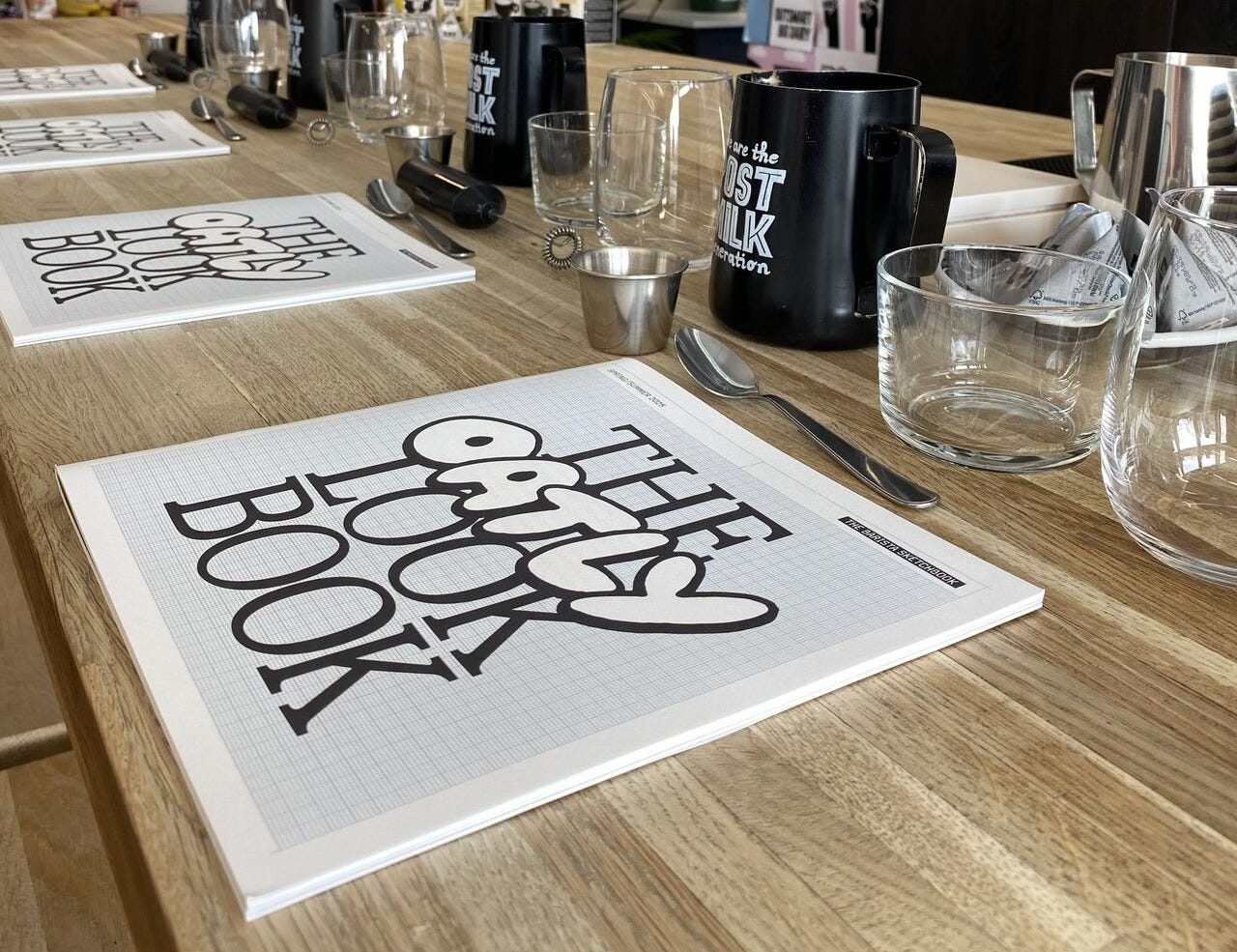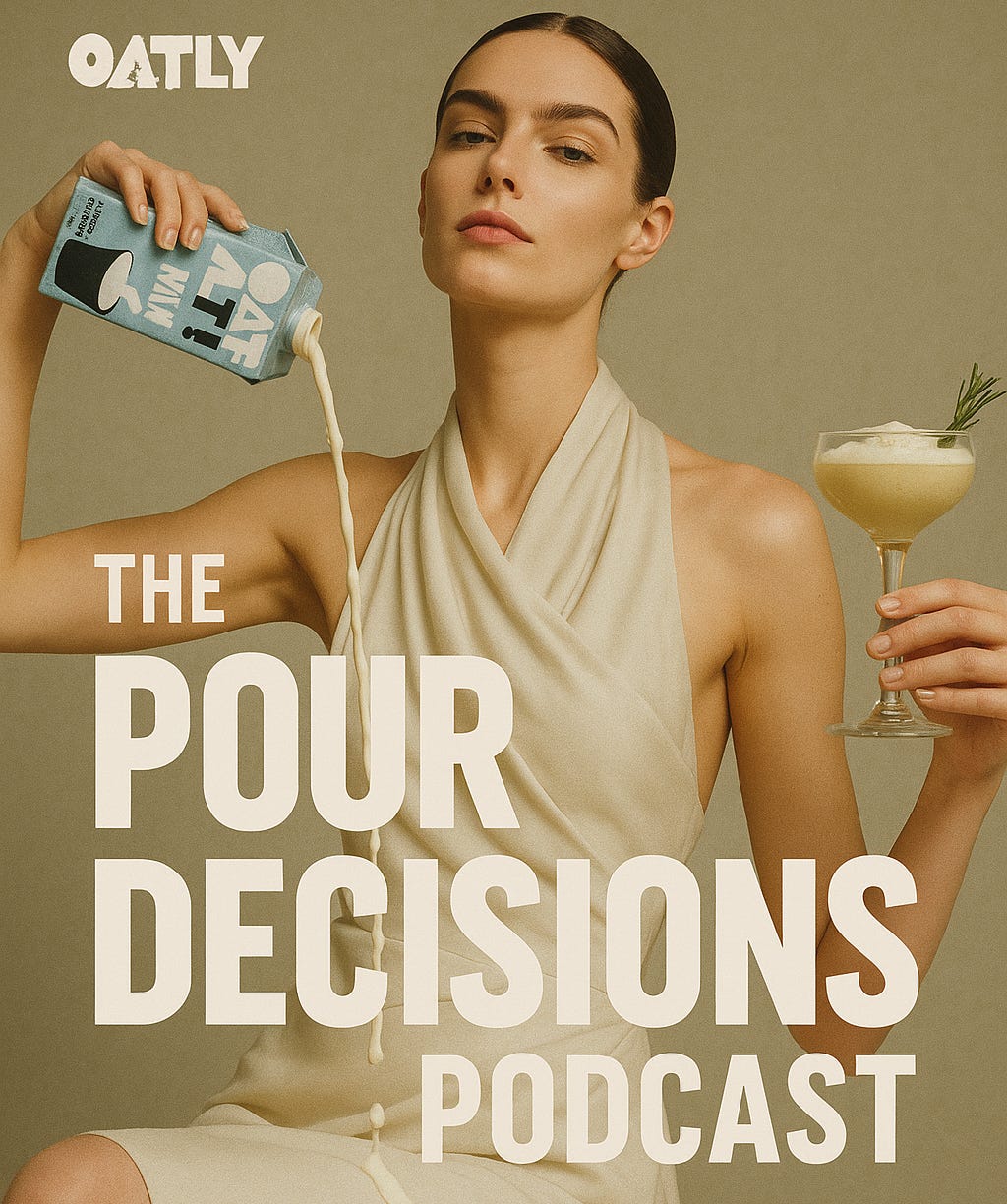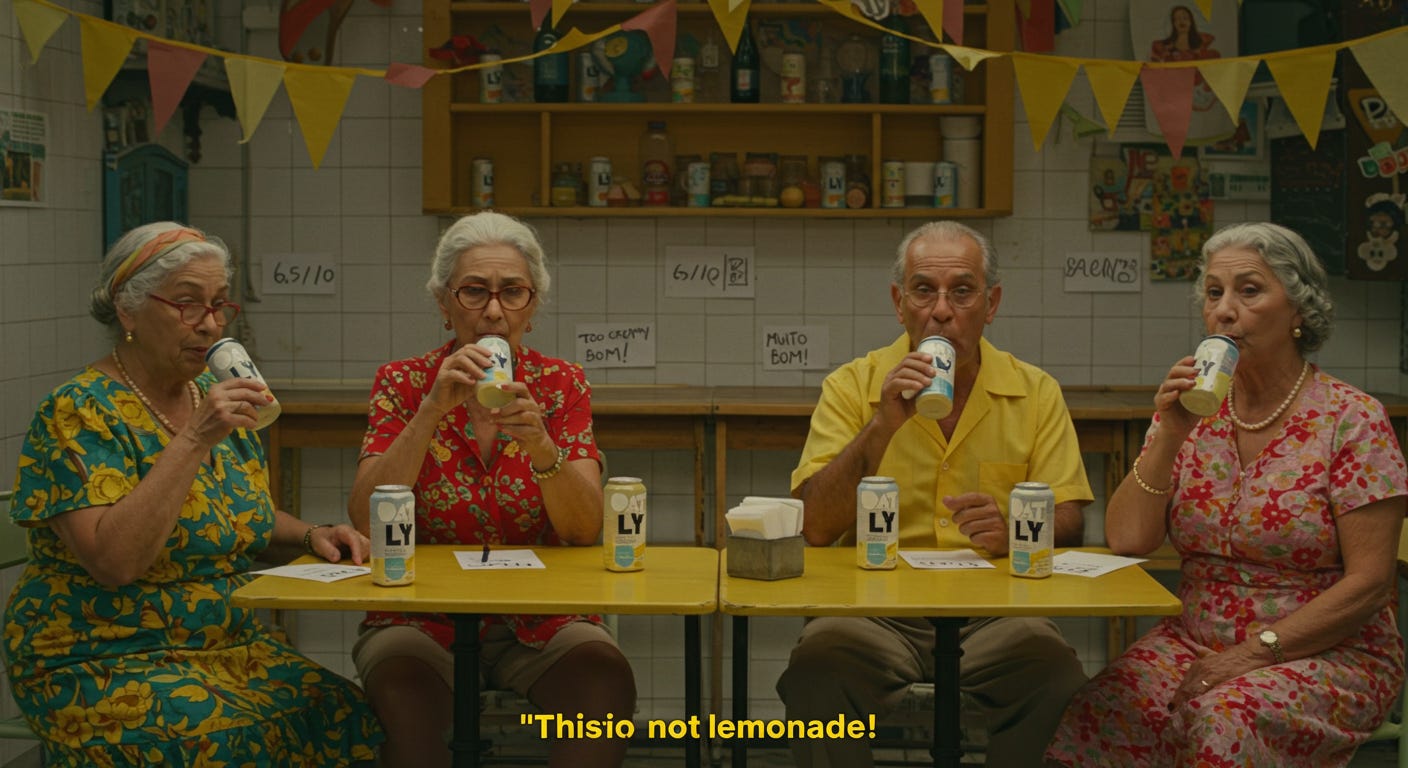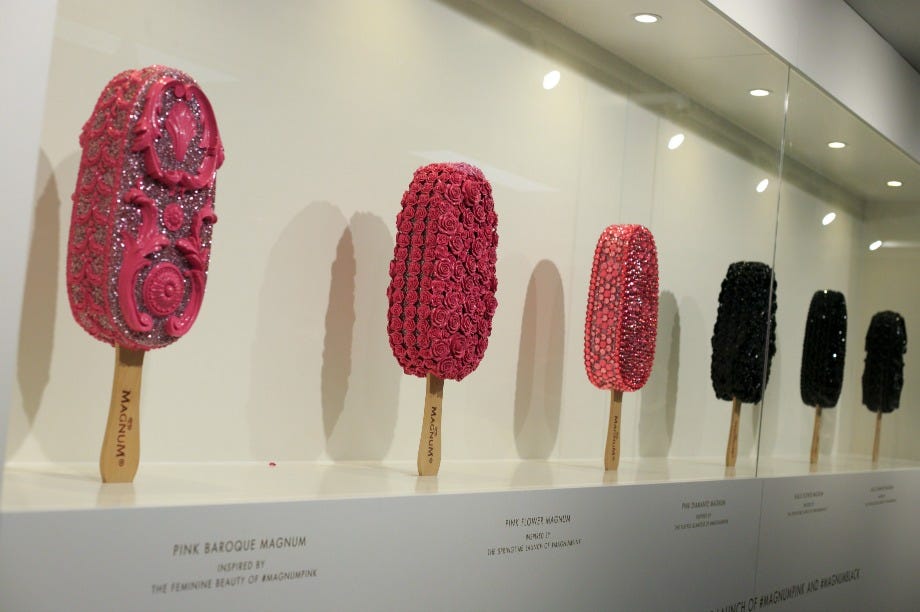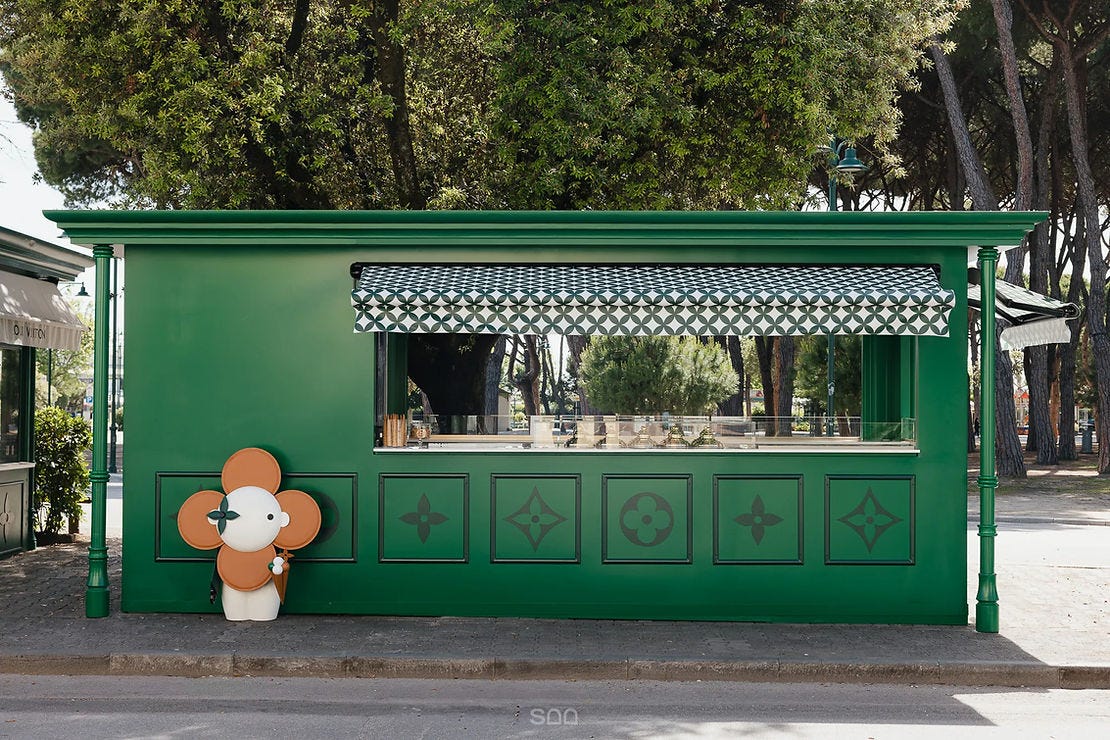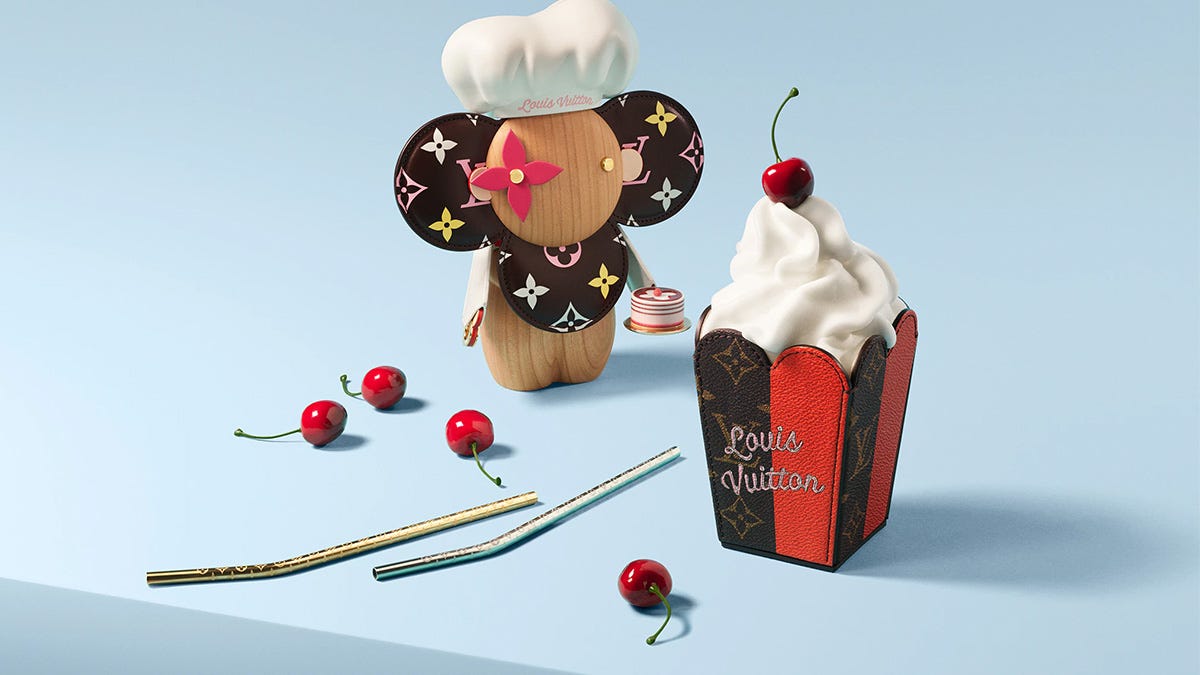Ideas We Love: The Oatly Look Book S/S25
Issue Number 56: Sweden's premier Alt-Dairy brand goes all 'Oat-Couture'
Hi there. How are you?
The focus of this week’s newsletter is Swedish plant based brand Oatly. The brand has a special place in our hearts at IWL HQ, as Tom was fortunate enough to work with the lovely people there for a number of years.
We’d assume that the brand needs no proper introduction. If you work in the industry, then there is every chance you’ll have referenced their work as an example of what bold, creative advertising and marketing can look like. Or, you might alread live in an Oatly drinking household.
They are a great example of a modern challenger, chosing to pick a fight on behalf of the consumer, seeking to right a wrong which they see in society. In the case of Oatly, they are keen to address the damage that the dairy industry does to our environment each year. Oatly believe their product is like milk, but made for humans.
To start to recruit people into helping their cause, and to create more impact than the dollar amount of their media budget might normally allow for, they employed a style of communication which was distinctly ‘anti-category’.
This approach positioned them in opposition to many of the stylistic quirks of the FMCG category. When they began advertising and scaling their business in Europe around 2016, the way they advertised looked very strange in the context of other food brands. Their distinctive ,‘meta’ tone of voice and house-style has now been widely copied by other brands, both in and outside of their category.
Oatly has enjoyed explosive growth over the last 10 years. They were well placed to capitalise on the growth of the dairy alternatives market and their aggressivity in media investment (relative to SOM), as well as the distinctiveness of their communications approach has enabled them to steal share from Alpro, who were the incumbent brand in the category. Oatly now has c.23% share of the market versus Alpro’s 32%. In 2017, when Oatly’s marketing machine sprung into action in the UK, Alpro had a SOM of 62% (source: Euromonitor).
If you go to your local coffee shop and ask for an Oat latte, it’s more than likely that you’ll be getting Oatly in that coffee.
But, explosive growth cannot last forever (as we see in the numbers above). Oatly’s rate of growth is slowing relative to growth in the category as more brands and private label players enter and begin to compete. We know from the teachings of Byron Sharp, that penetration & focussing on light buyers is the best route to driving growth. What do you do when your scale makes that penetration harder to achieve?
The classic FMCG answer is to think about driving consumption in more occassions. But, when you’re Oatly and have built a brand around doing the counterintuitive thing relative to ‘traditional’ food category norms, following the standard template probably won’t cut it.
The Idea: The Oatly Look Book Spring / Summer 2025 👘
To coincide with this year’s London Coffee Festival, Oatly launched their Spring/Summer 2025 Look Book. Essentially, a collection of 18 oat-based cocktail recipes that uses the companies army of barista developers to ask the question of ‘what might be next’ in the world of coffee consumption.
This is food recipe content but not as we know it. The campaign borrows from the grammar of high-fashion (beautiful photography and all), and fuses it with weird, wonderful and unexpected ingredient combinations. To mark the launch of the Look Book, Oatly hosted a pop up ‘On the Rocks’ Coffee shop for the duration of the Festival, had a party and partnered with a range of brands and influencers to enable them to launch the “Lookbook drinks with maximum visibility, community connection, and creative flair”
Why we love it …. 💕
#1. Oat-standing creativity 🌾
At the most basic level, the Look Book provides the brand with some new news: a means by which it can go out to market and build some brand affinity and salience with new customers. Even if no one engages with the actual recipe content, this gives the brand something to talk about in a way which perpetuates Oatly’s alternative, creative positioning relative to the rest of the competition and category. This is something no-one else in their competitive set would dare dream of doing.
#2. A ‘Long’ & ‘Deep’ Idea 💡
We’re big fans of ‘long-ideas’: things which have got the legs to keep running and running forever. The Look Book wrapper which attaches a range of drinks to a season, gives Oatly the license to keep this coming back time after time with new recipes and seasonal ingredients. We saw earlier how this idea was brought down into the level of experiential via the pop up cafe and party, but we also like how this idea goes ‘deep’ - beyond what the customer sees - and starts to inform how Oatly can work with their ‘B2B’ customers in coffee shops too. Below, we can see how the Look Book is being used as training material for Baristas. Nice.
#3. It’s a sales promotion, silly 🤪
The chances of us making a Cherry & Tonka Bean Cold Foam at home are slim to none. However, if you put that drink on the menu of my favourite coffee shop, then I’d probably give it try. Oatly partnered with select coffee shops to place some of the Look Book recipes on their menus, giving the earliest of early birds a freebie on the house. As with all the best things we’ve featured in IWL, this idea understands that the gap between brand and performance is not as big as some people might have you believe.
What we’d do with it …. 💕
Given creative freedom … and no limit on the time and budget available to us, what might we do with this idea in media, comms and beyond?
#1. A renewable source of ‘attention’ 🧠
Media fragmentation means it’s harder and harder for brands to ‘rent’ attention through paid for advertising. Given Oatly’s sustainable approach to business - we think there is opportunity in reframing the content of the Look Book in a way which creates a more sustainable approach to brand building too.
Reframed as a show on TikTok or Youtube, or a food podcast, the Look Book becomes an editorial strand that is entertaining in and of itself, attracting audiences. With so many branded content plays having no link or interplay with the product on sale, they risk becoming vanity exercises. No such problem here. The product is the platform and it can become a source of what we like to call ‘renewable attention’. An activity that’s attractive in and of it’s own right, that people navigate towards for their own information and entertainment.
#2. Owned but Open Media 👐
Assuming Oatly publishes the Look Book twice a year going forward, the brand shouldn’t just scream “Look at these weird drinks”. The quirky nature of these recipes should be framed as a provocation for people to “try this” and “twist this”, not forgetting to “tag Oatly when you do”. This shifts the Look Book from being “a nice bit of branded content” to a set of building blocks that audiences can remix and re-distribute on Oatly’s behalf.
Think Baristas creating their own spins on the drinks. Think fans making videos of recipes, then reviewing them in their kitchens. Think tastemakers styling them based upon trending flavours, colours and iconography. The more they get re-mixed, the more Oatly travels across other people’s social feeds.
#3. Subverting the codes of “Cocktailing” 🍸
With this framing for how you take the Look Book to market, Oatly can then get playful in order to promote the recipes with people….
In a world of cocktailing content that’s designed for the feed; vertical video, sound-on, fully branded in the first 3 seconds (yawn)… why not flip that convention and go deep and quirky for each recipe in the Look Book in a way that mimics the fashion world they’re borrowing from….
So, thinking out loud: “Brazilian Lemonade” is “Not Lemonade” per se… So, why not create a movie to make this point? Borrowing from the playbook of Palace Skateboards for a second: Create a trailer for the season and give a backstory to each look (or the most interesting ones) in a pseudo-serious way. In the instance of our Brazilian Lemonade, the film is shot in the style of a new wave Brazilian short film.
The direction: Think handheld camera, saturated colours, nostalgic filters, and a grainy, VHS finish where the barista or bartender shares how they stumbled across this taste sensation.
Launched and then paired with some Brazilian critics, aunties and uncles maybe, who share some brutally honest opinions about this new concoction.
Using any footage captured throughout the shoot to create some more conventional ad-assets in the form of hypnotic 15-second loops of the recipe. ASMR sound: Blend. Pour. Squeeze…. Then repeat again for the other recipes in the book- creating both scale and depth that gives people more reasons to play along and try the serve or put their own spin on it in the process….
If you like this, you’ll love…. 💕
What other things from the world of brands and advertising did the Look Book remind us of?
#1. Palace’s ‘Tone of Voice’ 🛹
Speaking of Palace, Palace are the masters of tone of voice. Every interaction with their product pages (or even their saftety warnings on packaging) is an opportunity for them to have fun and show who they are as a company.
#2. Magnum’s Pleasure Store
Magnum elevated the humble choc-ice into a luxury ritual without becoming niche; enabling customers at their pop-up Pleasure Stores to decorate their ice-cream in very grammable ways.
#3. Louis Vuitton’s Gelataria
In order to recruit new audiences and break into new occasions, we’re seeing lots of luxury brands flipping the Magnum model on its head. Creating new ways and new points of access for people to enjoy a bit of LV without re-mortgaging the house. Lovely.
Until next time
As always, thanks for reading!
Until next time, Cheerio
Tom & Matt x


